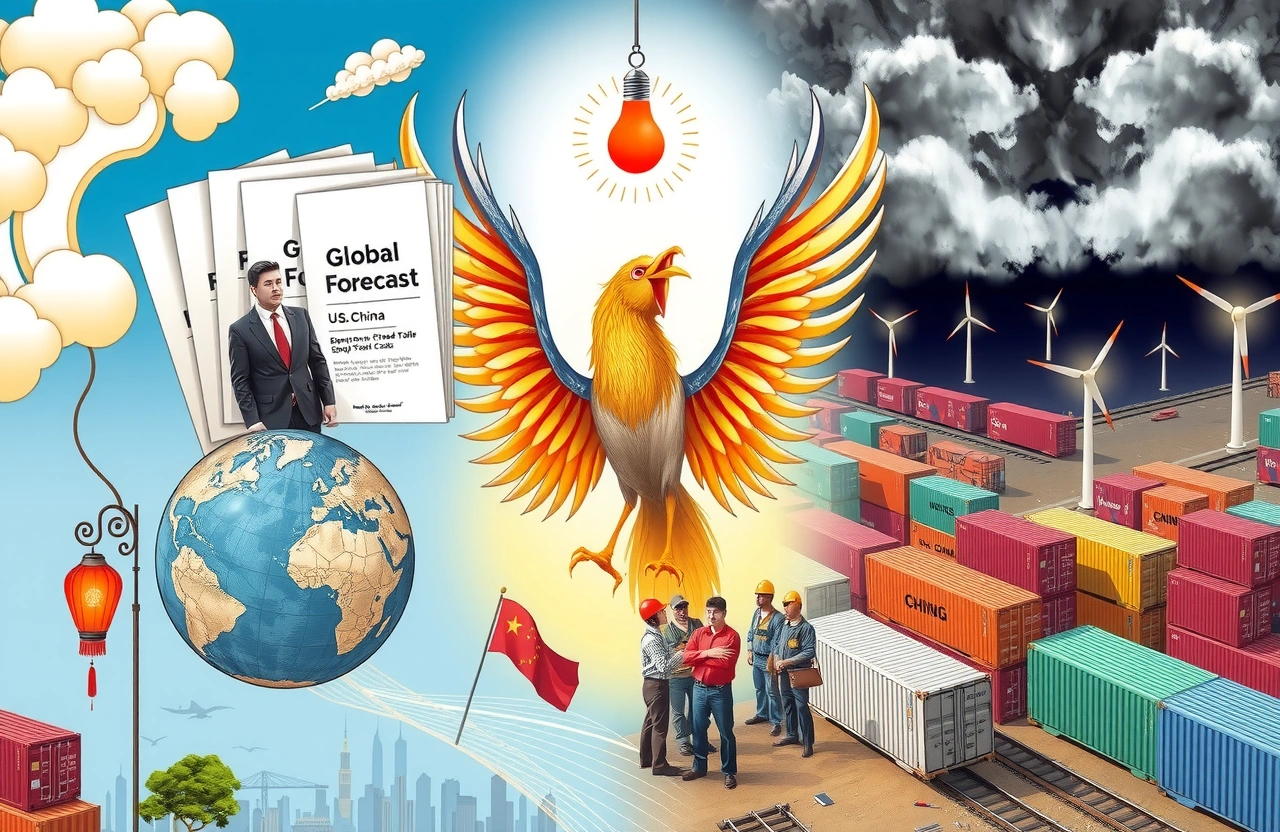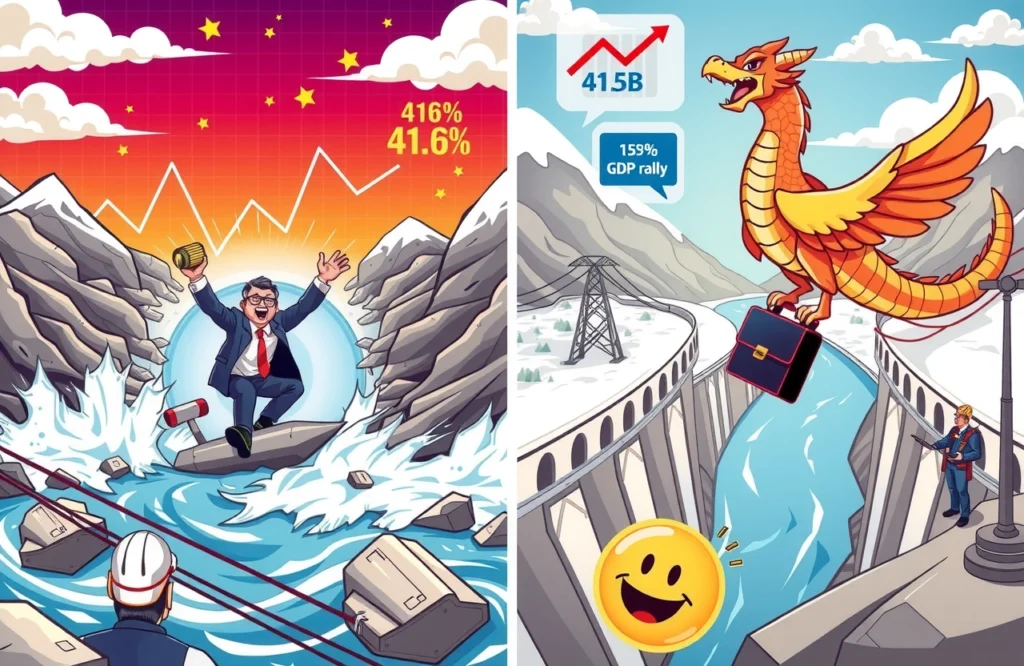Key Takeaways from the IMF Economic Assessment
– The IMF will revise global growth projections upward in its late July report due to improved trade flows and financial conditions
– Trade tensions remain significant downside risks, creating persistent uncertainty across global markets
– April’s forecast downgrade marked the lowest growth expectations since 2020 amid tariff escalations
– Emerging economies show resilience in capital flows despite ongoing market volatility
– Policy reforms addressing fiscal imbalances and central bank independence are urgently needed
A Delicate Global Economic Balancing Act
The International Monetary Fund (IMF) signals cautious optimism as it prepares to upgrade its global growth projections in late July. Improved trade metrics, easing inflation pressures, and stabilized financial markets contribute to this brighter outlook according to Gita Gopinath, First Deputy Managing Director at the IMF. Yet beneath these promising indicators lies a web of unresolved trade tensions threatening economic stability worldwide.
The Fund’s scheduled July assessment follows April’s stark revision that marked global growth projections at their weakest since the pandemic. With heightened protectionism and escalating tariffs dimming prospects earlier this year, the anticipated upgrade represents a significant but fragile shift. Global trade volume increased by 0.3% quarterly as reported by the CPB Netherlands Bureau for Economic Policy Analysis as importers rushed transactions ahead of anticipated tariffs—a temporary boost that underscores deeper structural vulnerabilities.
The Methodology Behind IMF Forecast Revisions
Understanding the IMF’s forecasting rhythm provides context for the upcoming July revision. The Fund maintains a structured approach to global economic assessments:
– Comprehensive forecasts issued during April and October World Economic Outlook reports
– Interim updates released each January and July incorporating emerging economic data
– Special revisions triggered by unexpected macroeconomic shocks
The April 2024 report delivered sobering news: global growth projections shrunk to 2.8% for 2025—the weakest outlook since 2020’s pandemic collapse. This revision responded primarily to escalating trade barriers, showing how rapidly market conditions can deteriorate under protectionist policies.
Behind the Numbers: Impacts of Tariff Escalations
The 2022-2024 period witnessed significant tariff implementations:
– U.S. tariffs covering $350 billion in Chinese imports averaging 19% duty rates
– EU carbon border taxes affecting $11 billion in steel and aluminum imports
– India’s tech sector tariffs impacting $3 billion in electronics trade
These restrictive measures directly contributed to April’s forecast downgrade as documented in the IMF’s World Economic Outlook database. Supply chain fragmentation costs could reach $1.4 trillion annually by 2025 according to WTO projections.
Trade Tensions: The Persistent Economic Saboteur
Despite anticipated forecast improvements, the IMF emphasizes that unresolved trade conflicts fundamentally cloud economic prospects. “Downside risks continue dominating the economic landscape with uncertainty hovering at elevated levels” cautioned Gopinath during the recent G20 Finance Ministers’ summit. Three interconnected challenges persist:
1. Fragmentation of global supply chains raises production costs
2. Policy uncertainty deters long-term corporate investment
3. Retaliatory tariffs suppress export-driven economies
The Peterson Institute for International Economics estimates unresolved U.S.-China tariffs alone suppress global GDP by 0.5% annually—equivalent to $420 billion in unrealized economic value. Emerging markets face compounded pressures from tariff vortices, currency instability, and capital flight risks.
Critical Policy Interventions Needed
The IMF advocates urgent measures to defuse trade tensions:
– Resolving disputes through WTO adjudication frameworks
– Suspending non-essential national security tariffs
– Establishing bilateral working groups on agricultural/market access
“The release valve for economic pressure remains negotiated solutions” Gopinath emphasized. During G20 negotiations, finance ministers advanced multilateral commitments to reduce trade-distorting subsidies but fell short of substantive tariff reduction pledges.
Reforms Beyond Trade: Fiscal and Monetary Priorities
Tackling Fiscal Imbalances
The IMF’s recommendations extend beyond trade conflict resolution:
– Targeted fiscal consolidation to manage public debt burdens
– Strategic subsidy reforms focusing expenditures
– Progressive tax policies addressing inequality
Global public debt reached 92% of GDP this year per the Institute of International Finance. Advanced economies with aging populations face particular pressure on pension systems—Japan demonstrates concerning trends with debt exceeding 260% GDP.
Monetary Policy Independence Imperative
Central banking autonomy featured prominently in the G20 communiqué as essential for controlling inflation. The IMF position remains clear:
– Monetary authorities must maintain independence from political pressure
– Policy calibration requires domestic economic contexts
– Rate adjustments must precede inflationary emergencies
Recent collaborative efforts between the Federal Reserve and ECB demonstrated central banks’ pivotal role navigating inflation surges. Chair Jerome Powell’s measured rate hike approach successfully contained U.S. inflation without accelerating recessionary trends.
Emerging Market Resilience Amid Financial Headwinds
The IMF report reveals paradoxical capital flow patterns across developing economies:
– Portfolio investment remained $78 billion below pre-pandemic averages
– Direct investment showed resilience with 12% year-over-year growth
– Remittances surged as migration patterns intensified post-pandemic
“Capital remains restrained but demonstrates remarkable stability considering market volatilities” Gopinath advised during her G20 presentation. Key emerging markets adopted defensive strategies:
– India raised $50 billion through sovereign green bonds
– Brazil strengthened currency swap arrangements
– Indonesia instituted strategic commodity export policies
The World Bank’s Global Economic Prospects report underscores COVID-induced vulnerabilities intensifying emerging economy policy challenges. Poorer nations experienced investment contraction approaching 18% compared to pre-pandemic baselines.
Preparing For the July Forecast: Tracking Developments
Economic stakeholders should monitor critical pre-report indicators:
1. High-frequency trade metrics from ports/commodity exchanges
2. Consumer inflation surveys across major economies
3. Corporate earnings guidance referencing tariff impacts
The IMF’s revised projections arrive July 24th alongside updated World Economic Outlook dashboards accessible through public portals. With uncertainty persisting, businesses should prioritize:
– Supply chain diversification via friend-shoring partnerships
– Scenario planning accounting for 15-25% tariff escalations
– Inventory optimization balancing storage costs against disruption risks
The anticipated forecast upgrade reflects genuine economic positives while underscoring durable risks. Global recovery depends fundamentally on stabilizing trade relationships while implementing structural reforms. Market participants must balance cautious optimism with preparation for ongoing turbulence where political solutions lag economic necessities. Establish contingency reserves and diversify market access now—the interdependent global economy depends on collective action against protectionist pressures.




